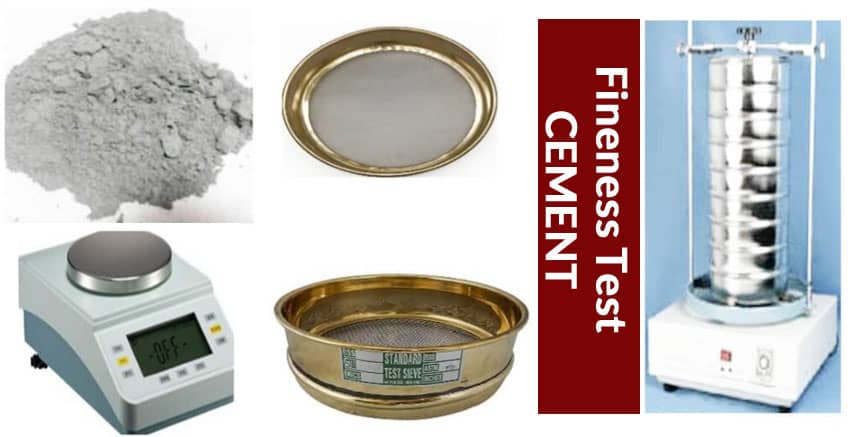Fineness test of Cement and its Significance

Cement is an adhesive substance that acts as a binder used for construction which sets, hardens and binds materials together. The fineness of a material means the state of being little in size.
The fineness of cement is conducted to find out if the cement is finely grind or not. It is denoted in terms of the specific surface area of cement. A specific surface is exhibited as the total surface area in square metres of all the cement particles in one kilogram of cement.
The fitness test is done by straining the cement sample through standard IS sieve. The weight of the cement molecule whose size is greater than 90 microns is determined and the total percentage of retained cement particle is calculated. This process is known as Fineness of cement. Generally, Cement used for construction should have a value of fineness less than 10%.
To learn more, watch the following video tutorial.
Significance of fineness test of Cement
Testing of cement is very important because of the following reasons
- As a known fact cement hydrates when mixed with water and a thin layer forms on every side of the particle.
- The thin layer grows larger and makes cement particles discrete, as a result of which the cement hydration slows down. The bleeding of the cement also gets reduced.
- On the contrary, cement smaller particles react much faster than the larger particle.
- There are also side effects to this test as having too much smaller particles because it results in a quick setting time and leaves no time for mixing, handling and placing of the cement.
- So, to increase the setting time for having too many small particles, cement is manufactured in a different range of particle sizes and used according to its needs.
Requirements for measuring fitness test of cement
To determine the fineness of cement we need
- 90 ?m IS sieve.
- Weight balance with the capacity of 10mg to 100g
- Pure bristle or Nylon brush.
Fineness Test of Cement Procedure
To measure the Fineness test of cement the following methods are used
- Firstly, the collection of the sample of the cement is taken and rubbed in the hands of the tester. The Fineness test sample should be free of any lumps.
- Then 100 gm of cement sample is to be taken and its weight should be noted as W1.
- Now the 100 gm pf cement is to be dropped in a 90 ?m sieve and closed with the lid.
- The sieve is shaken by the tester in planetary and linear motion for 15 minutes.
- After that, the weight is taken from the retained sand on the 90 ?m sieve as W2.
- The formula for the calculation of cement is Fineness = (W2/W1) * 100.
- Then the percentage of the weight of cement-retained is calculated on Sieve.
- This process is then repeated three times using three different cement samples and the value of these are then averaged for accurate results.
The standard value of fineness of the cement should have a fineness of less than 10 per cent or the fineness of cement should not be more than 10 as per the IS recommendations and guidelines.
To learn more, watch the following video tutorial.
Video Source: HIGHWAY GUIDE
